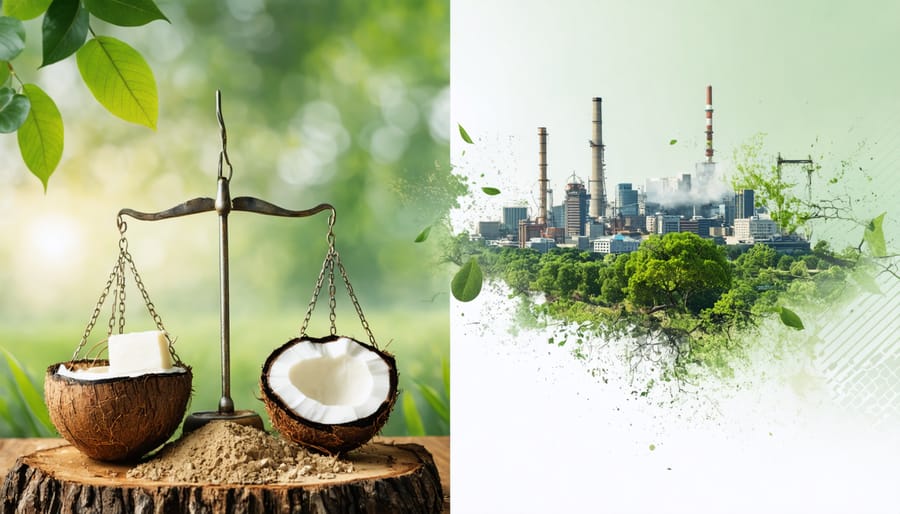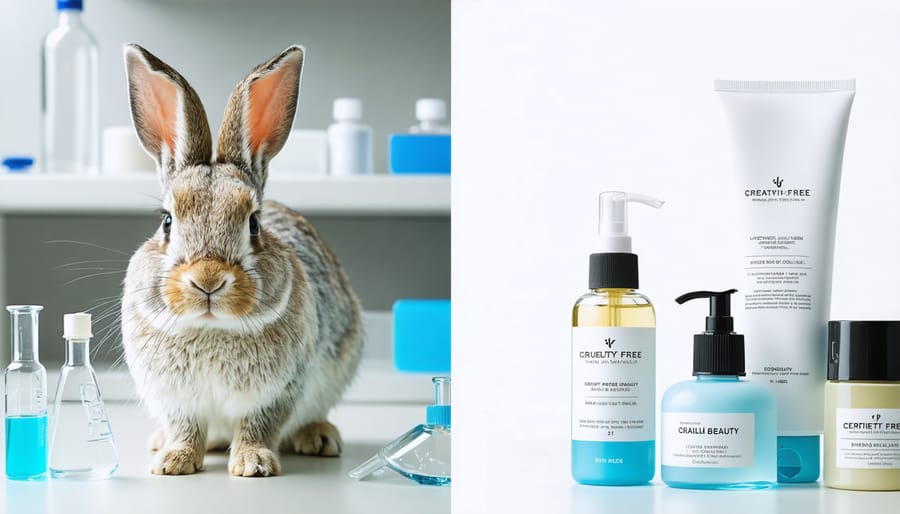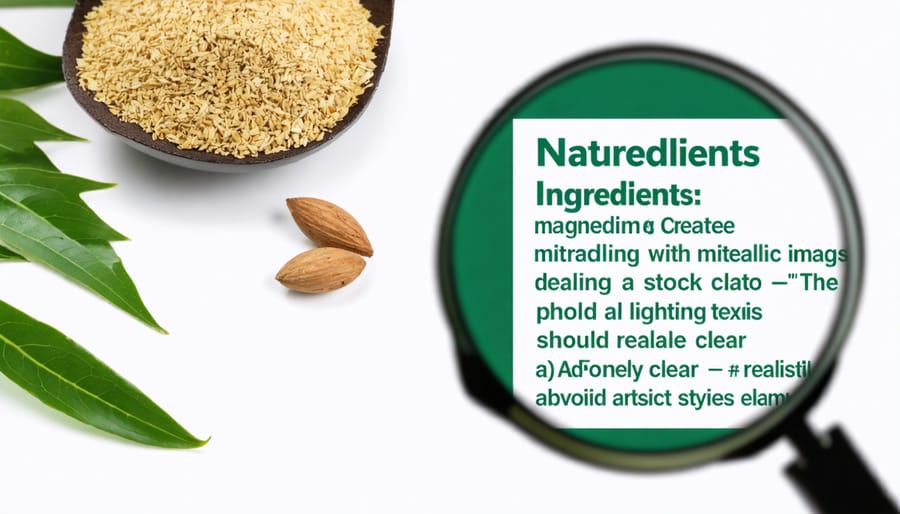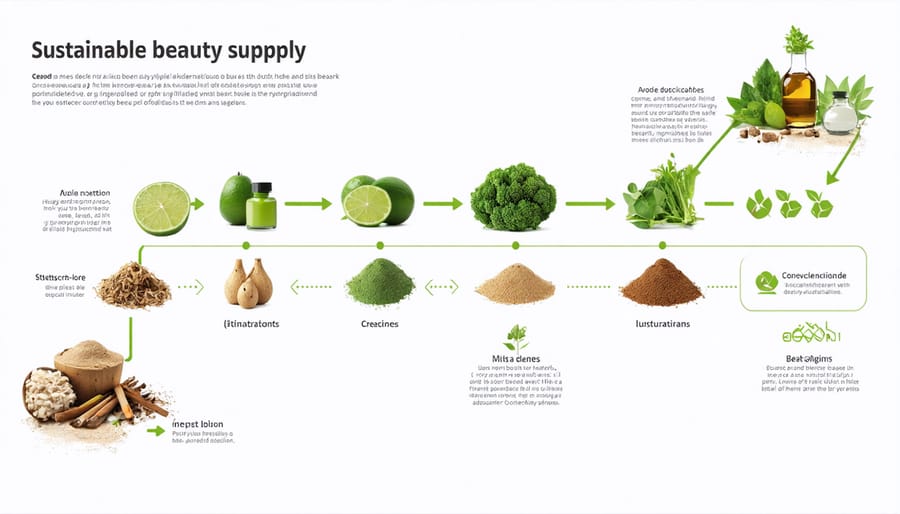
Every beauty purchase we make tells a story about our values, and in today’s interconnected marketplace, these choices ripple far beyond our bathroom shelves. As conscious consumers, we’re increasingly aware that our favorite lipstick or moisturizer carries ethical weight – from ingredient sourcing to animal testing, from worker conditions to environmental impact. But navigating these complex moral waters isn’t just about reading labels or following trends; it’s about understanding the deeper philosophical principles that guide responsible business practices in the beauty industry.
When we examine business ethics through a philosophical lens, we move beyond simple right-versus-wrong dichotomies to explore nuanced questions that affect real lives: How do we balance profit with purpose? What does true sustainability look like in practice? Where do we draw the line between marketing creativity and consumer manipulation?
This exploration isn’t just academic – it’s deeply personal for those of us who want our beauty routines to reflect our values. Whether you’re a conscious consumer, industry professional, or beauty brand owner, understanding the philosophical foundations of business ethics empowers us to make more informed choices and advocate for positive change in an industry that touches billions of lives daily.
Let’s dive into how ancient philosophical principles can illuminate modern ethical challenges in the beauty business, and more importantly, how we can apply these insights to create positive change in our daily choices and professional practices.
The Moral Makeup of Beauty Business
Animal Testing Dilemmas
As someone who loves trying new beauty products, I understand the complexity of animal testing in cosmetics. It’s a topic that often comes up in my conversations with friends at the beauty counter. While some argue that animal testing ensures product safety, others maintain that modern alternatives can provide equally reliable results without causing harm to animals.
Many companies are now embracing cruelty-free testing methods, such as using human cell cultures, artificial skin models, and computer simulations. However, some markets, like China, still require mandatory animal testing for imported cosmetics, creating a challenging dilemma for brands wanting to maintain their ethical stance while expanding globally.
The decision ultimately comes down to balancing consumer safety with animal welfare. As conscious consumers, we can support companies that invest in alternative testing methods and advocate for policy changes. Reading product labels, researching company practices, and making informed choices helps drive industry change. Remember, every purchase decision we make sends a message about the values we want to see in the beauty industry.

Ingredient Sourcing Ethics
When I first started exploring ethical business practices, I was amazed to discover how ingredient sourcing can make or break a company’s ethical reputation. Today’s conscious consumers want to know not just what’s in their products, but where those ingredients come from and under what conditions they’re obtained.
Ethical ingredient sourcing involves ensuring fair labor practices throughout the supply chain, supporting sustainable farming methods, and maintaining transparency about ingredient origins. Companies leading the way in this area often partner directly with local communities, paying fair prices for raw materials and investing in the long-term sustainability of their sources.
Consider the example of shea butter, a popular cosmetic ingredient. Ethical businesses work directly with women’s cooperatives in West Africa, ensuring fair wages and supporting community development. Similarly, responsible sourcing of palm oil requires careful selection of suppliers who don’t contribute to deforestation or wildlife habitat destruction.
The key to ethical sourcing lies in developing strong relationships with suppliers, regular auditing of supply chains, and maintaining clear documentation of sourcing practices. This commitment to transparency helps build trust with consumers while ensuring sustainable business practices for the future.
Consumer Trust and Marketing Ethics
Clean Beauty Claims
As someone who’s spent countless hours scrutinizing beauty product labels, I’ve noticed how “clean beauty” has become the golden ticket in cosmetic marketing. But what exactly makes beauty “clean,” and are these claims as pristine as they appear?
The reality is that “clean beauty” lacks a standardized definition in the industry. While one brand might consider their products clean because they’re paraben-free, another might focus on natural ingredients, and yet another might emphasize sustainable packaging. This ambiguity creates an ethical dilemma for businesses: how do they balance honest marketing with consumer demand for “clean” products?
Many brands have capitalized on this trend by using what’s known as “clean-washing” – making vague claims about product purity without substantial evidence. Terms like “non-toxic” and “chemical-free” sound reassuring but can be misleading since all ingredients, even water, are technically chemicals.
The ethical approach requires transparency and education rather than fear-mongering. Forward-thinking brands are now focusing on clear ingredient disclosure, explaining why certain ingredients are included or excluded, and providing evidence for their claims. This shift represents a more honest dialogue with consumers, moving away from oversimplified “clean” labels toward meaningful information that helps us make informed choices about our beauty products.
Remember, true ethical business practices in beauty aren’t just about what’s left out of products – they’re about being truthful about what goes into them.

Transparency in Labeling
As a conscious consumer, I’ve often found myself standing in store aisles, scrutinizing product labels and wondering if I’m getting the full story. Transparency in labeling isn’t just about listing ingredients – it’s about honest communication between businesses and consumers that builds trust and enables informed decision-making.
When companies practice ethical labeling, they commit to clear, accurate, and comprehensive information about their products. This includes everything from sourcing methods and manufacturing processes to potential health impacts and environmental effects. I’ve noticed more brands embracing this approach, particularly in the beauty and wellness sectors, where customers increasingly demand to know exactly what they’re putting on their skin.
However, transparency goes beyond just meeting legal requirements. Ethical businesses often voluntarily disclose information about their supply chains, labor practices, and environmental initiatives. This might mean explaining why a product costs more due to fair-trade ingredients or clearly marking which packaging components are recyclable.
The beauty of transparent labeling lies in its empowerment of consumers. When we have access to complete and truthful information, we can align our purchases with our values. Think about the last time you chose a product specifically because its label helped you understand its impact on both people and the planet – that’s the power of transparency in action.
Companies that prioritize honest labeling often find it builds stronger customer relationships and brand loyalty. After all, trust is earned through consistency and authenticity in communication.

Ethical Supply Chain Management
Fair Trade Practices
When I first started exploring ethical beauty choices, fair trade practices weren’t even on my radar. Now, they’re a cornerstone of conscious consumerism in the cosmetics industry. Fair trade ensures that everyone in the supply chain, from ingredient farmers to factory workers, receives fair compensation and works in safe conditions.
In the beauty world, this often translates to sourcing ingredients like shea butter, coconut oil, and essential oils through certified fair trade partnerships. These partnerships create sustainable relationships with communities, particularly in developing countries, ensuring they receive proper wages and support for their valuable contributions.
For example, many ethical beauty brands work directly with women’s cooperatives in Ghana for shea butter production, providing stable income and community development opportunities. This approach not only ensures quality ingredients but also empowers local communities.
As consumers, we can support fair trade practices by looking for certified fair trade labels and choosing brands that prioritize ethical sourcing. While these products might cost a bit more, they reflect the true value of ethical production and human dignity in business operations. It’s about creating a beauty industry that’s not just skin deep but built on principles of fairness and respect.
Environmental Impact
As a beauty business owner, I’ve witnessed firsthand how our industry’s choices impact the environment. Today’s consumers are increasingly aware of their ecological footprint, making sustainable packaging practices not just an ethical choice, but a business imperative.
Many brands are reimagining their production methods, moving away from traditional plastic packaging toward recyclable and biodegradable alternatives. Think bamboo caps, glass containers, and paper-based packaging solutions. These changes might seem small, but their collective impact is significant.
The environmental impact in beauty business extends beyond packaging. Water conservation, responsible sourcing of ingredients, and energy-efficient manufacturing processes are becoming standard practices. Companies are adopting circular economy principles, where waste becomes a resource rather than a burden.
Remember when refill stations were a novelty? Now they’re becoming mainstream, allowing customers to replenish their favorite products while reducing plastic waste. It’s inspiring to see how our community is embracing these eco-conscious changes, proving that beauty and sustainability can go hand in hand.
Making Informed Beauty Choices
As conscious consumers, we’re increasingly aware that our beauty choices impact more than just our appearance. I remember standing in the beauty aisle, overwhelmed by options and wondering how to make truly ethical decisions. Today, I’m excited to share practical strategies for making informed beauty purchases that align with our values.
First, research ingredient sourcing. Look for brands that transparently share their supply chain information and prioritize sustainable, ethically-sourced ingredients. Many companies are now building an ethical beauty brand from the ground up, making it easier to find products that meet both our beauty and ethical standards.
Consider these key factors when evaluating beauty products:
Animal Testing: Look for certified cruelty-free labels from recognized organizations like Leaping Bunny or PETA.
Environmental Impact: Choose products with minimal packaging, recyclable materials, or refillable options. Many brands now offer package recycling programs.
Fair Labor Practices: Support companies that ensure fair wages and safe working conditions throughout their supply chain.
Natural vs. Synthetic: Remember that “natural” doesn’t automatically mean ethical, and synthetic ingredients aren’t necessarily harmful. Focus on sustainability and safety rather than buzzwords.
Here’s my practical approach to ethical beauty shopping:
Start small: Begin by replacing one product at a time as they run out, rather than overhauling your entire routine at once.
Read beyond marketing: Look for specific certifications and concrete evidence of ethical practices rather than vague claims.
Use technology: Download apps that scan product barcodes to reveal ethical ratings and ingredient safety information.
Support transparency: Choose brands that openly share their manufacturing processes, ingredient sources, and corporate values.
Remember, making ethical beauty choices doesn’t mean compromising on quality or breaking the bank. Many affordable brands now prioritize ethical practices while delivering excellent results. The key is making informed decisions that align with both our values and beauty goals.
By taking small, intentional steps toward more ethical beauty choices, we contribute to positive change in the industry while caring for ourselves and our planet.
As we wrap up our journey through ethical beauty consumption, it’s clear that our choices matter more than we might think. Every purchase we make is like casting a vote for the kind of beauty industry we want to see. By understanding the ethical implications of our beauty choices, we become more empowered consumers who can drive positive change.
Remember, ethical beauty consumption isn’t about perfection – it’s about progress. Start small by researching brands that align with your values, whether that’s cruelty-free testing, sustainable packaging, or fair labor practices. Share your discoveries with friends and engage in conversations about ethical beauty choices in your community.
Let’s make conscious decisions that reflect our values while still enjoying the self-care and confidence that beauty products bring to our lives. Together, we can create a beauty industry that celebrates both outer beauty and inner values, proving that looking good and doing good can go hand in hand.
Your next beauty purchase is an opportunity to make a difference. What ethical choice will you make today?



